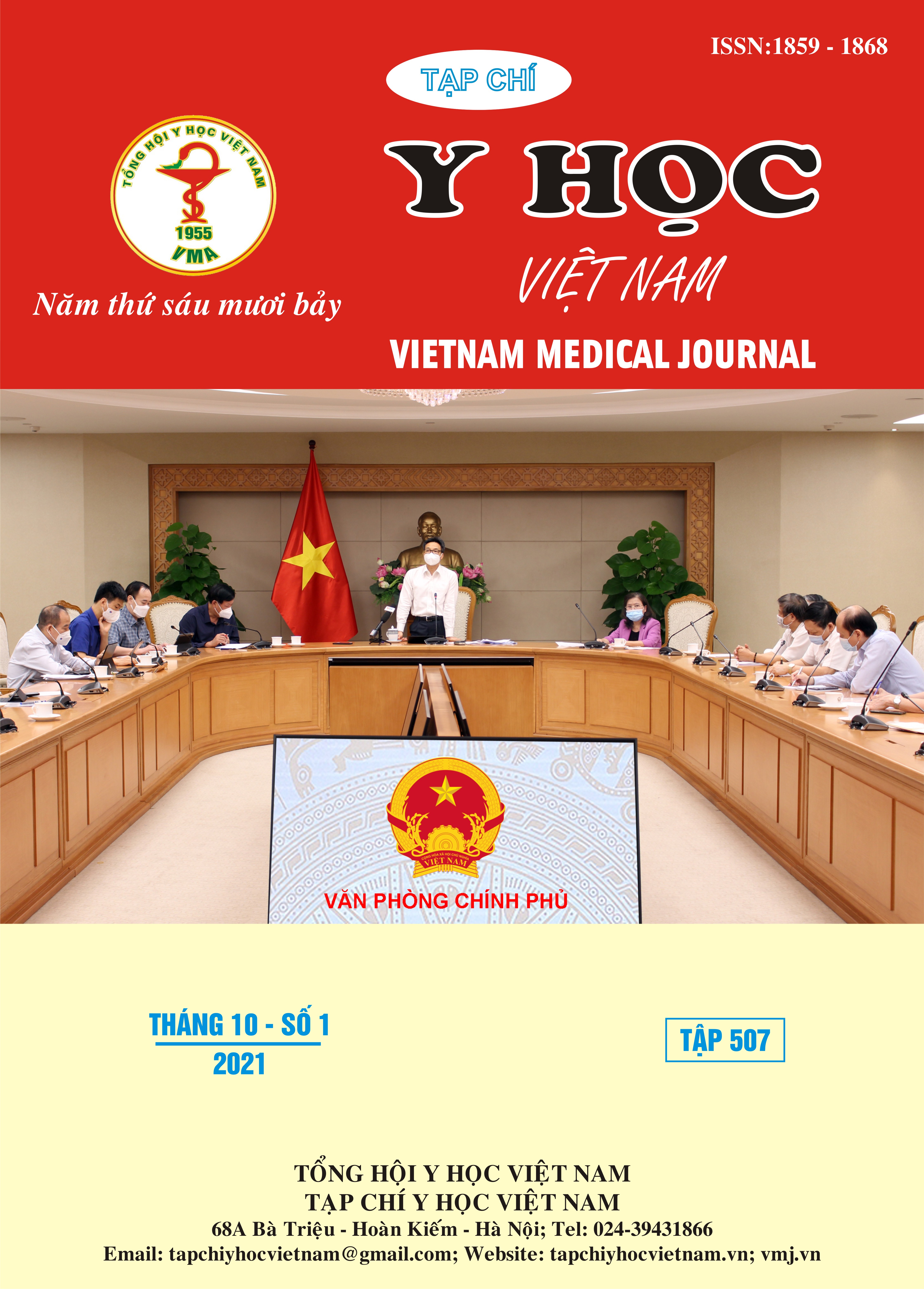CLINICAL CHARACTERISTICS BY CAUSE OF ANAPHYLAXIS IN CHILDREN AT VIET NAM NATIONAL CHILDREN’S HOSPITAL (2017-2021)
Main Article Content
Abstract
Objectives: Trigger of anaphylaxis and characteristic symptoms for each trigger in children at Vietnam National Children’s Hospital. Method: A cross-sectional descriptive study was recorded 129 patients at Vietnam National Children’s Hospital from January 2017 to July 2021. Results: 63,6% of the participants are under 12 months old. The ratio of boy-girl is 1.4/1; 64.3% of patients were transferred from medical facilities. Drugs are the most common trigger of anaphylaxis 62.8%, vaccines: 18,6%, food: 14%, insect venom: 3,9%, others: 0,7%. The symptoms are diversity: drugs anaphylactic reactions affect the circulation (91%) and nerve system (88%), vaccine anaphylactic reactions affect the circulation (92%) and nerve system (96%); food and insect venom anaphylactic reactions affects the skin and mucous membranes (100%, 100%). Drugs and vaccines occur more Grade 3 anaphylaxis (64,2%; 54,2%) and are able to occur Grade 4 anaphylaxis (12,3%; 8,3%). Conclusions: Medication is the most common trigger of anaphylaxis. Drugs and vaccines anaphylaxis affects most on the circulation and nerve system. Food and insect venom anaphylaxis affects most on mucous membranes.
Article Details
Keywords
anaphylaxis, symptoms, children
References
2. Nguyễn Xuân Quốc, Phạm Văn Quang, Tăng Chí Thượng (2015), "Đặc điểm dịch tễ, lâm sàng bệnh nhi bị sốc phản vệ tại bệnh viện nhi đồng 1", Nghiên cứu Y học, 2-2016: 15-22.
3. Phạm Văn Thắng (2009), "Nhận xét một số đặc điểm dịch tễ lâm sàng và kết quả điều trị bệnh nhân bị sốc phản vệ do thuốc tại Bệnh viện Nhi Trung Ương", Đề Tài Nghiên Cứu Khoa Học Tại Khoa Điều Trị Tích Cực Bệnh Viện Nhi Trung Ương.
4. Bộ Y tế (2017), "Thông tư Hướng dẫn phòng, chẩn đoán và xử trí phản vệ - Số 52/2017/TT-BYT".
5. Yan Xing, Hua Zhang, Shusen Sun, Xiang Ma, Roy A. Pleasants, Huilin Tang, Hangci Zheng, Suodi Zhai, Tiansheng WangYan Xing (2017), "Clinical features and treatment of pediatric patients with drug-induced anaphylaxis: a study based on pharmacovigilance data", European Journal of Pediatrics, 177: 145-154.
6. Alberto Alvarez-Perea, Beatriz Ameiro, Cristina Morales, Gabriela Zambrano, Ana Rodriguez, Miguel Guzmán, José Manuel Zubeldia and María L. Baeza (2017), "Anaphylaxis in the Pediatric Emergency Department: Analysis of 133 Cases After an Allergy Workup", American Academy of Allergy, Asthma & Immunology, 5(5):1256-1263
7. Si Hui Goh et al (2018), "Cause and Clinical Presentation of Anaphylaxis in Singapore: From Infancy to Old Age", Int Arch Allergy Immunol, 175(1-2):91-98.
8. Sang-Yoon Kim, Min-Hye Kim, Young-Joo (2017), "Different clinical features of anaphylaxis according to cause and risk factors for severe reactions", Allergology International, 67(1):96-102


